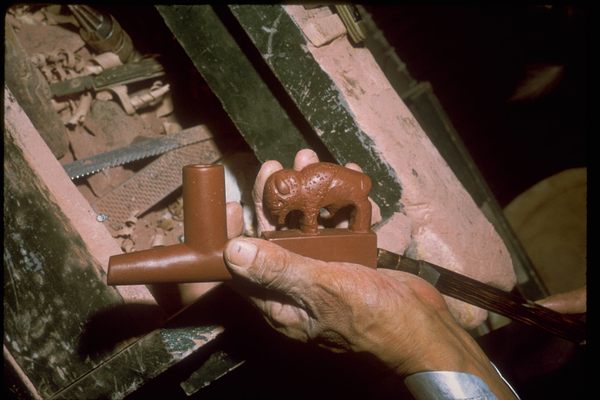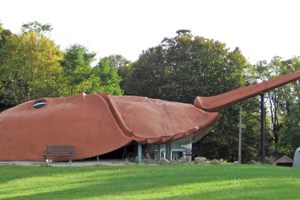About
Pipestone, Minnesota takes its name from the abundance of local catlinite, which is traditionally used by various tribes of Plains Indians to craft ceremonial pipes. The catlinite quarry just north of Pipestone, now protected by the National Park Service as the Pipestone National Monument, has been called the "Crossroads of the Indian World" for its significance to so many tribes.
The town preserves its heritage at the Keepers of the Sacred Tradition of Pipemakers, a workshop founded by Native American artisans where traditional pipes are crafted. Finding the workshop is easy: Just keep an eye out for the gigantic red pipe on the front lawn, standing 30 feet tall, allegedly the largest in the world.
The giant pipe was independently conceived by two Lakota and one Anishinaabe local, who each had literal dreams of building a giant pipe to represent the connections of Plains Indians to the Pipestone quarry. They merged their aspirations into one and the pipe was installed in front of the Pipe Keepers' building in 1999.
In the building itself, visitors can support traditional Native craft by purchasing or carving their own (regular-sized) pipes. The Keepers educate visitors on the history of nearby pipestone quarries and teach workshops on tribal culture using techniques passed down through generations.
Often mislabeled as a "peace pipe," the Plains Indians' ceremonial pipes are used for prayer as well as community building. It's believed the smoke from the pipe delivers voices to the Great Spirit. The pipe itself is fashioned to honor different elements of the natural world, using stone to represent the earth and a carved buffalo and decorative feathers to represent animals.
Related Tags
Know Before You Go
On the north edge of town, next to the former Rock Island Railroad Depot. At the corner of 4th St. and Hiawatha Ave.
Published
April 4, 2017























